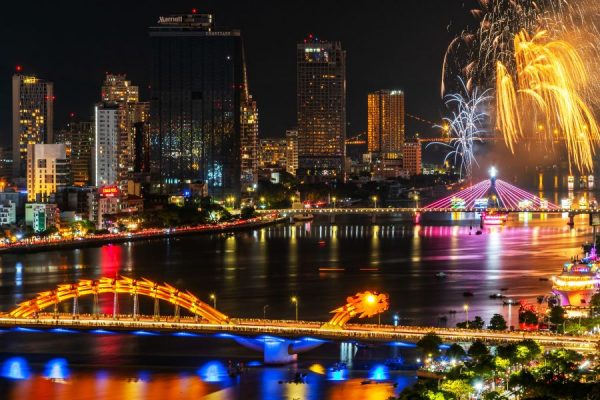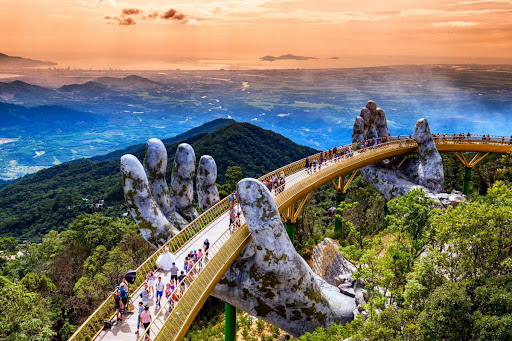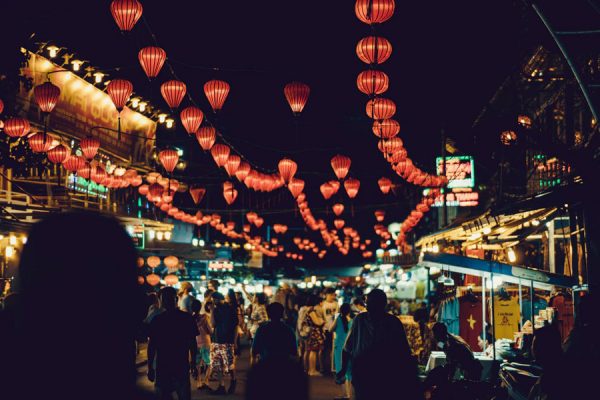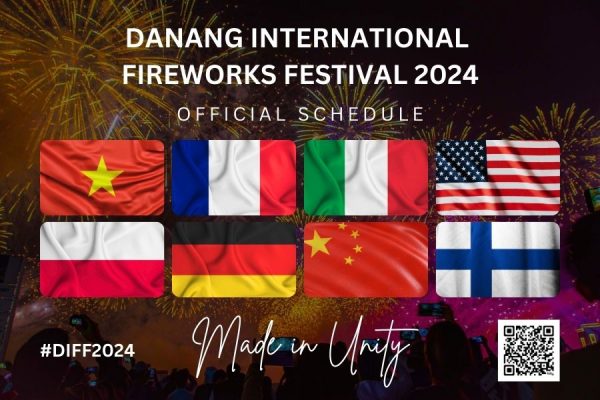Da Nang’s Tran Thi Ly Bridge is the fifth bridge up the Han River, about 1 km south of the Rong (Dragon) Bridge. The construction of the 1,709 billion VND bridge began in April 2009, and it was officially opened to traffic on 29 March 2013.
With its suspension cables, the bridge forms an upside-down capital “Y” and is intended to look like sails facing towards the East Sea. The bridge has emerged as a must-see feature of Da Nang and an ideal place for visitors who like taking souvenir photos during their stay in the city.
It is believed that the Tran Thi Ly bridge, with the image of sails filled with wind, not only shows charming and gentle characteristics, but also symbolises the city’s aspirations for further development in the future. It has one of the most unique architectural styles of all the bridges in Viet Nam. A striking feature of its design is the 145m-high, backwards-leaning single tower which creates the eye-catching form of the bridge.
The bridge was named after Vietnamese revolutionary activist Tran Thi Ly from Quang Nam Province’s Dien Ban District, whose real name was Tran Thi Nham. She was a member of the Viet Nam People’s Army and the South Viet Nam Liberation Army. During the past two resistance wars, even though Miss Ly was brutally and inhumanely tortured in the prisons of the invaders, she showed her indomitable spirit and admirable bravery, and she never revealed any of Viet Nam’s revolutionary strategies and plans to the enemy.
Before the building of the Tran Thi Ly Bridge could begin, an older bridge had to be removed from the same site. Built by the French over 60 years ago, the De Lattre Bridge was the first bridge to span across the Han River. In the 1950s, experts from the USA arrived in Da Nang to conduct surveys on the Son Tra Peninsula and the Marble Mountains. At that time, the French colonisers embarked on turning Da Nang into a military base through the construction of new infrastructure and upgrading the existing. Amongst the new constructions was the De Lattre Bridge to link the inner-city with the port of Da Nang. The bridge had the important role of facilitating the transport of aid coming in from the USA to the French in the city.
By 1955, all the local streets whose names were in French had been renamed in Vietnamese, except for Pasteur and Yersin streets which were named after two great benefactors of humanity. During this period, the De Lattre Bridge was renamed the Trinh Minh The Bridge after a military official under the Republic of Viet Nam during the 1954 – 1975 period.
Source: danangtoday










Evaluate